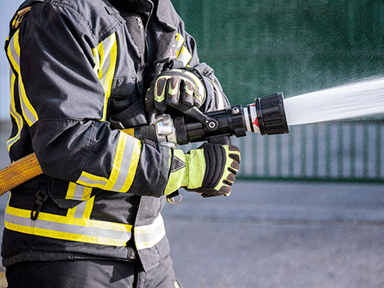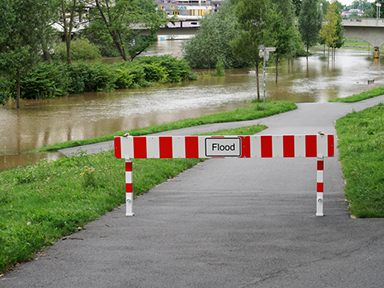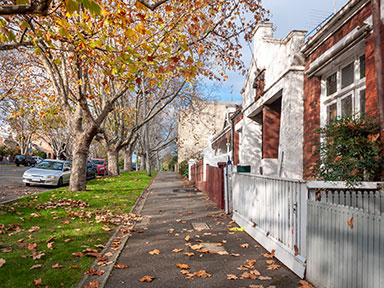History has shown that the wrath of Mother Nature can be fierce. One natural disaster that can leave plenty of damage in its wake is a hailstorm. Here’s what you need to know about this severe weather condition and how you can protect your rental property.
Imagine lumps of ice the size of cricket balls pelting down. Now imagine those ice blocks hurtling towards your property at up to more than 200 kilometres an hour. Now think about it going on for five hours and 35 minutes through the night – and dumping 500,000 tonnes of those ice blocks during those terrifying hours.
That is precisely what happened at 7:45pm on Wednesday 14 April 1999 in Sydney, when the capital city was hit with a massive hailstorm. Can you picture the carnage that was left in its wake?
Tragically one person lost their life when the hailstorm ravaged 85 suburbs. There were also 70,000 cars and 24,000 houses that suffered damage including to roofs, windows and skylights.
At the time, insured losses of $1.7 billion were incurred. In today’s money, we’re talking $8.85 billion – making it the costliest natural disaster in Australia’s history (for comparison, the 2022 east coast floods incurred insured losses of $6.12 billion).
What is hail and what causes it?
Hail is a type of solid rain that falls from the sky as ice pellets. During a thunderstorm, hail forms when raindrops are carried upward into cold areas of the atmosphere. As the raindrops move higher, the temperature drops below zero degrees and causes them to freeze and become balls of ice. When they become too heavy for the updraught to support them, they begin to fall and can travel up to 200 kilometres per hour, causing serious damage.
When and where do hailstorms occur?
Hail is most common in the warmer months (between October and February) when strong thunderstorms are more frequent. The east coast of Australia is most prone to hailstorm, although hail has been reported over most parts of Australia, except for tropical regions where is it unlikely to occur.
How often do they occur?
A look at historical catastrophe data from the Insurance Council of Australia reveals that a total of 32 severe hailstorms occurred between 1967 and July 2021. There were 12 in the first half of this period (1967 to the end of 1993), which equates to roughly one severe hailstorm every 2.3 years. There were 20 in the second half of the period (from 1994 to July 2021), which is approximately one severe hailstorm every 1.4 years – showing that severe hailstorms have been occurring more frequently in recent decades.
According to research from the University of NSW (UNSW), Australia is expected to experience more hailstorms, which could also be more severe, over the coming years – particularly in the southeast of the country. UNSW found the annual number of hail-prone days in Sydney and Perth has increased by up to approximately 40 per cent.
What damage can hail cause?
Aside from posing a risk to life, hail can cause significant damage to homes, buildings, cars and infrastructure. Of course, not all hail causes harm, but when it does, it can be extensive and costly.
When it comes to homes (and rental properties certainly aren’t immune), damage from hailstorms can include:
-
Cracked or shattered skylights.
-
Shattered solar panels.
-
Cracked and broken terracotta tile, slate and other non-metal material roofs.
-
Dented or holey metal roofs.
-
Cracked and smashed windows and glass doors.
-
Water ingress from damaged roofs, skylights or windows leading to such risks like flooding and electrical issues.
-
Blocked, dented or bent gutters and downpipes.
-
Dented, chipped or cracked siding materials and wall cladding.
-
Chipped or cracked exterior paintwork.
-
Torn screens.
-
Severe damage to outdoor structures such as pergolas, sheds, greenhouses and conservatories.
-
Dents and damage to outdoor fixtures, such as light fixtures, air-conditioning units, satellite dishes, and fences.
-
Significant damage in yards including to outdoor furniture and garden beds.
-
Power outages.
How can you protect your rental from hailstorm damage?
To help protect your investment property (especially if located in hail-prone areas) consider:
-
Having the roof periodically checked for cracks, leaks or porous tiles by a professional roofer.
-
Repairing any roof damage.
-
Installing roof sarking (protective layer under roof tiles).
-
Reinforcing the roof with hail-resistant materials.
-
Evaluating the age and condition of skylights and other roof fixtures and undertaking repairs where necessary.
-
Installing skylight protectors.
-
Installing protective coverings like hail guards or screens over windows, skylights, and other vulnerable areas.
-
Protecting windows and glass doors with secure/storm shutters.
-
Checking and repairing the window seals.
-
Installing toughened glass windows.
-
Keeping gutters and drainpipes free of debris.
-
Installing larger, hail-designed gutters.
-
Trimming overhanging trees.
-
Enclosing carports.
-
If it’s safe to do so, placing hail blankets over solar panels when a hail warning is announced.
-
Securing outdoor structures and placing outdoor furniture under cover when a storm is forecast.
What to do if your rental is damaged by hail
Safety needs to be your top priority. Once it is safe to do so, you need to act to prevent further loss (this is a condition of your insurance cover).
As hail can cause damage to glass and roofing, protecting the property from further damage largely means ensuring that further moisture does not enter the property through hail-caused holes or openings. Arrange for broken windows to be boarded up or covered over and holes in the roof or skylights to be covered with waterproof tarps or other waterproof materials. Heads up: Never ask your tenants to do anything that could endanger their safety, or you could be held liable for any injury they suffer.
Immediately following a hailstorm, assess the state of the property, including damage to the exterior of the building, roof, and any outdoor areas. Once the damage is assessed and you think you need to make a claim, contact your insurance provider for guidance.
Is hailstorm damage covered by landlord insurance?
Most insurance providers, including EBM RentCover, consider a hailstorm to be a natural disaster. All of our landlord insurance policies have cover for damage caused by natural disasters such as hail.
Other insurance policies will generally respond when damage has been caused by hail, depending on what is covered by the policy and on the policyholder fulfilling their requirements. This involves not only taking action to prevent further loss but also adequately maintaining the premises, such as keeping roofs in good repair. If the rental’s upkeep is lacking (say, for example, there are cracked and missing roof tiles), then any claim could be jeopardised – the payout could be limited, or the claim even denied.
Got questions about natural disaster provisions in EBM RentCover landlord insurance policies? Please reach out to a member of our Expert Care team on 1800 661 662 – we are happy to help!
*While we have taken care to ensure the information above is true and correct at the time of publication, changes in circumstances and legislation after the displayed date may impact the accuracy of this article. If you need us we are here, contact 1800 661 662 if you have any questions.
You may also like
View all
If your property, or one you manage, is damaged due to a natural disaster, these FAQs may help you to navigate this time...

The frequency and severity of natural disasters in Australia is increasing. Here are things landlords can do to protect their investment...

With autumn just around the corner, now is a good time to make sure you are aware of a few seasonal hazards...



